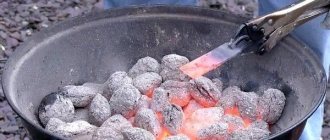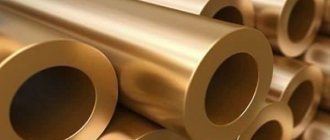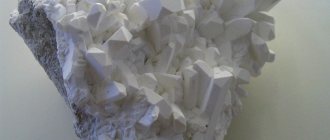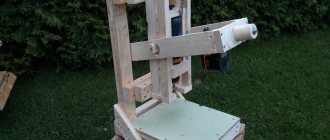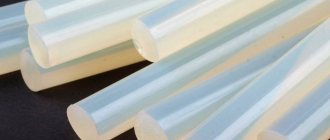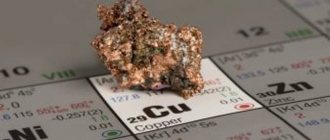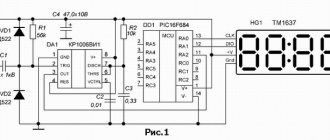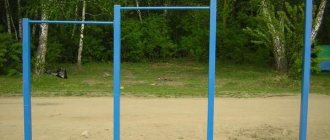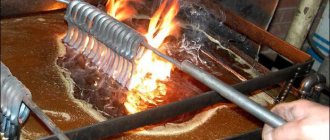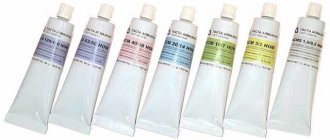Annealing, hardening and heat treatment of bronze
Are you interested in annealing, hardening and heat treatment of bronze? The supplier Avec Global offers to buy bronze of domestic and foreign production at an affordable price in a wide range. We will ensure delivery of products to any point on the continent. The price is optimal.
Basic heat treatment operations
Homogenization, hardening, annealing and tempering.
Homogenization
Homogenization is used to reduce the segregation and corrosion found in some cast and hot-worked bronze workpieces, primarily those containing a higher percentage of tin. Diffusion and homogenization are slower and more difficult in tin and silicon, so these alloys usually undergo lengthy homogenizing treatments before hot or cold working operations. Bronzes (containing more than 8% Sn) are characterized by extreme segregation. Therefore, before processing, the brittle segregated tin phase is first destroyed, thereby increasing strength and ductility, and reducing hardness before rolling. These goals are achieved by homogenization at a temperature of about 760 ° C. Cold treatment is used much less frequently.
Annealing
The workpiece is heated to a temperature that induces recrystallization and, if maximum softening is desired, heated above the recrystallization temperature to induce grain growth. The annealing process is affected by many interacting variables. The heating rate, furnace design, furnace atmosphere and workpiece shape are important. For bronze alloys, the criterion for assessing the quality of recrystallization annealing is the grain size.
Annealing temperature
The supplier Avec Global offers to buy bronze of domestic and foreign production at an affordable price in a wide range. We will ensure delivery of products to any point on the continent. The price is optimal.
Vacation
Stress relief in bronze workpieces aims to reduce or eliminate residual stress, thereby reducing the likelihood that the part will fail due to cracking or corrosion fatigue during operation. A number of bronzes, particularly aluminum and silicon bronzes, can crack under critical stress. Stress relief tempering is performed at temperatures below the normal annealing range that do not cause recrystallization and subsequent softening of the metal.
Hardening
High strength in most grades of bronze alloys is achieved through cold working. Hardening is used to increase mechanical strength beyond the levels typically obtained by cold plastic deformation. Examples of precipitating hardening copper alloys include beryllium and silicon bronzes, as well as bronzes with higher phosphorus and silicon contents.
Buy. Supplier, price
Are you interested in annealing, hardening and heat treatment of bronze? The supplier Avec Global offers to buy bronze of domestic and foreign production at an affordable price in a wide range. We will ensure delivery of products to any point on the continent. The price is optimal. We invite you to partner cooperation.
Source
Basic properties of BrB2 bronze
The BrB2 alloy is very specific, different from other copper alloys. The specificity of this alloy is due to the beryllium (Be) it contains. Beryllium bronzes belong to the class of so-called dispersion-hardening alloys, a feature of which is the dependence of the solubility of alloying components on temperature, which makes it possible to control the properties of bronzes, both in the production of rolled products and in the manufacture of products. In industrial alloys of the Cu-Be system, as in most materials with the effect of dispersion strengthening, the concentration region is located near the boundary of maximum solubility in solid solution, and corresponds to approximately 2% Be content. At beryllium concentrations of 1.6 to 2.0% by weight, a modification of beryllium known as the β phase is present at temperatures below 600˚C. This phase forms as a result of the limited solid solubility of beryllium. This factor most contributes to hardening during heat treatment (“aging”). When the alloy is heated to a temperature of 780˚C, beryllium dissolves in the α phase (α + β solid solution). Rapid cooling to room temperature maintains beryllium in solid solution. This process, called annealing, makes the alloy soft and malleable, helps regulate the size of the crystals, and prepares the alloy for the “aging” operation. Heating a saturated solid solution to a temperature of 315˚C and holding it at this temperature for 2-3 hours causes precipitation of the strengthening phase and gives the alloy high hardness. One of the important properties of the material used for sliding bearings is resistance to heat. Table 1 shows the change in the mechanical properties of the BrB2 alloy containing 2% Be, depending on the temperature and duration of heating. Before heating, the samples were subjected to aging at T=320 ˚C for t=2 hours.
Table 1 Change in mechanical properties of samples of copper-beryllium alloy BrB2, with increasing temperature and duration of exposure at a given temperature.
| No. | Temperature, C | Exposure time, hour | Tensile strength, MPa | Proof of yield strength 0.2%, MPa | Elongation, % |
| 1 | 20 | 1 | 1265 | 1065 | 6,8 |
| 2 | 250 | 1 | 1350 | 1050 | 5,8 |
| 3 | 250 | 500 | 1260 | 1005 | 3,9 |
| 4 | 250 | 1000 | 1020 | 945 | 3,9 |
| 5 | 300 | 1 | 1178 | 940 | 2,0 |
| 6 | 300 | 500 | 1022 | 750 | 3,0 |
| 7 | 300 | 1000 | 971 | 730 | 4,0 |
| 8 | 400 | 1 | 795 | 416 | 7,0 |
| 9 | 400 | 500 | 532 | 300 | 16,0 |
| 10 | 400 | 1000 | 492 | 287 | 20 |
Conclusion: As can be seen from the table, up to 250˚C the mechanical properties practically do not change even when held for 1000 hours, which indicates the good resistance of beryllium bronze to temperature effects. The most important properties of bearing material are wear resistance and antifriction. Due to the high hardness that products made from copper-beryllium alloys acquire after aging, they also have high wear resistance with good anti-friction properties. The friction coefficient of tempered copper-beryllium alloy BrB2 in a pair of axial railway steel and spindle oil lubrication No. 2, obtained when tested on an Amsler machine, is 0.05. Good sliding is ensured by the presence of an oxide film on the surface of the product. In addition, the CTE of BrB2 bronze is close to the CTE of tool steels, which also contributes to the reliable operation of these materials in one unit. Foreign experience in using beryllium bronze as a material for sliding bearings. Test results. Brush Wellman Inc (USA), a recognized world leader in the production of beryllium bronzes, recommends Alloy 25 alloy (C17200) for the production of bearing supports for heavily loaded units and devices operating in aggressive environments. Alloy 25 in its aged state achieves maximum strength and hardness after cold forming treatment. Ultimate tensile strength can exceed 200 ksi (1290 MPa) with a hardness of 45 HRC. Alloy 25 also exhibits exceptional resistance to stress relaxation under elevated temperature conditions. The Russian analogue of Alloy 25 is the BrB2 alloy, which is identical to Alloy 25 in chemical composition (Table 2) and has the mechanical characteristics given in Table 3 Table. 2 Comparative characteristics of beryllium bronzes by chemical composition,%
| Alloy grade | Be | Co | Ni | Co+Ni | Co+Ni+Fe | Impurities | Cu |
| Alloy 25 | 1,8-2,0 | — | — | 0.2 min | 0.6 max | 0.15Al; 0.15Fe; 0.15Si; 0.005Pb; amount-0.5 | Balance |
| BrB2 | 1,8-2,1 | — | 0,2-0,5 | — | — | 0.15Al; 0.15Fe; 0.15Si; 0.005Pb; amount-0.5 | Balance |
Table 3 Guaranteed mechanical characteristics of semi-finished products from BrB2 in comparison with BrKmTs3-1
| Alloy grade | GOST | Semifinished | State | Diameter, mm | σ, MPa | δ, % | NV |
| BrB2 | 15835-70; 1789-70 | Drawn rods | Soft | 5,0-40,0 | 392-590 | ≥25 | 100-150 |
| BrB2 | 15835-70; 1789-70 | Drawn rods | Solid | 5,0-15,0; 15,0-40,0 | 735-980; 640-880 | 1,0; 1,0 | 150; 150 |
| BrB2 | 15835-70; 1789-70 | Drawn rods | Aged from soft | 5,0-40,0 | ≥ 1080 | 2,0 | ≥320 |
| BrB2 | 15835-70; 1789-70 | Drawn rods | Aged from solid | 5,0-40,0 | ≥ 1170 | 2,0 | ≥340 |
| BrB2 | 15835-70; 1789-70 | Pressed rods | Pressed | 42-100 | ≥ 442 | 20 | — |
| BrKmTs3-1 | 18175-78; 1628-78 | Drawn rods | Solid | 13-41 | ≥ 490 | 15 | 160 |
Let us note that here and below, wear resistance (wear resistance) is understood as resistance under conditions when rubbing metals begin to weld, “seize” under the influence of high pressure, i.e. conditions arise for diffusion interpenetration of particles of rubbing metals. The Brush Wellman Engineering Center, justifying the choice of the Alloy 25 (BrB2) material, provides experimental wear resistance test data in Tables 4-8, obtained according to the ASTM -G98 method of the US engineering community. The methodology of the experiments was as follows: the wear of a pair of materials was measured in a device consisting of a stationary block of the test material, into the hole of which a cylindrical disk made of another contacting material is placed and loaded with an axial load, the latter being driven into rotation under dry friction conditions. In table Figure 4 shows data on the wear resistance of the Alloy 25 (BrB2) friction pair in contact with Alloy 25 (BrB2), subjected to various types of heat treatment and strain hardening. In table Figure 5 shows data on the wear resistance of Alloy 25 (BrB2) in contact with corrosion-resistant steels and alloys. Table 4 Wear resistance of Alloy 25 (BrB2) in contact with Alloy 25 (BrB2)
| Types of heat treatment of alloys in contact | Proof of yield strength, σ 0.2% | Threshold value of contact pressure of rubbing materials during testing |
| AT in contact with AT | 140ksi (903MPa) | 100ksi (645MPa) + |
| NT in contact with NT | 150ksi (968MPa) | 100ksi (645MPa) + |
| DST in contact with DST | 110ksi (709MPa) | 100ksi (645MPa) + |
NOTE: AT - Hardened and Aged HT - Cold Worked Hardened and Aged DST - Annealed and Aged to 100 -110 ksi + (no signs of wear) Tab. 5 Wear resistance of Alloy 25 (BrB2) in contact with corrosion-resistant steels and alloys
| Alloys in contact | Proof of yield strength, σ 0.2% | Threshold value of contact pressure of rubbing materials during testing |
| Austenitic steels in contact with Alloy 25: | ||
| 303 | 45ksi (290MPa) | 40ksi (258MPa) + |
| 304 | 55ksi (355MPa) | 30ksi (194MPa) + |
| 316 | 44ksi (284MPa) | 30ksi (194MPa) + |
| Ferritic and martensitic steels in contact with Alloy 25: | ||
| 416 (0.95%Cr, 0.3%Mo) | 92ksi (593MPa) | 70ksi (452MPa) + |
| 440 | 79ksi (510MPa) | 50ksi (323MPa) + |
| Nickel-cobalt alloys in contact with Alloy 25: | ||
| Nitronic 50 (analogue 03Х14Р7В) | 79ksi (510MPa) | 60ksi (387MPa) + |
| Nitronic 60 | 56ksi (361MPa) | 55ksi (355MPa) + |
| Alloy 2205 | 87ksi (561MPa) | 80ksi (516MPa) + |
| 15-5PH | 149ksi (961MPa) | 90ksi (581MPa) + |
| 17-4PH | 146ksi (942MPa) | 90ksi (581MPa) + |
| Custom 445 | 132ksi (851MPa) | 60ksi (387MPa) + |
| Gall Tough | 6ksi (38MPa) | 50ksi (323MPa) + |
NOTE: Alloy 25 during wear test at 145 ksi + (no signs of wear) Table. Table 6, for comparison with the wear resistance of Alloy 25 (BrB2), shows data on the wear resistance of some nickel-cobalt alloys, the chemical composition of which is given in Table. 7 In table. For comparison with the wear resistance of Alloy 25 (BrB2), Figure 8 shows data on the wear resistance of silicon bonzes of the BrKN1-3 and BrKMtsZ-1 types, usually used as antifriction bushings. Table 8 Wear resistance of silicon bronzes, usually used in sliding bearings Analysis of wear resistance test data allows us to draw the following conclusions: 1. A pair of beryllium bronzes Alloy 25 (BrB2) - Alloy 25 (BrB2) has the highest wear-resistant properties compared to other antifriction pairs. 2. Alloy 25 (BrB2) demonstrates good wear-resistant properties in the aged state, regardless of the history of heat treatment and previous pressure treatment. 3. During friction in a pair of Alloy 25 (BrB2) - corrosion-resistant steel, wear is not observed at loads up to 0.8 of the yield strength for most of the materials considered. 4. Beryllium bronze Alloy 25 (BrB2) has significantly higher wear-resistant properties compared to silicon bronzes (see tables 3, 4 and table 7) with higher mechanical properties in the aged state (see table 2) Conclusion: During friction in pairs, BrB2 alloy on BrB2 alloy, BrB2 alloy on stainless steel, wear is not observed at loads of 0.7...0.9 of the yield strength of the alloy or stainless steel (depending on what the yield strength of stainless steel is). The indicated loads in friction pairs significantly exceed the maximum loads for most other alloys, including those used as plain bearings. However, it should be noted that the wear resistance of BrB2 - ordinary steel pairs is relatively low. And finally, the third indicator characterizing the reliability of sliding supports is their corrosion resistance. For example, sliding bearings for drill bits or vane pumps operating in oil fields must withstand the effects of suspended and corrosive substances contained in formation fluids at high pressures and temperatures. In terms of corrosion resistance, binary beryllium bronzes are very close to tin and aluminum bronzes. For example, the corrosion resistance of BrB2 in a 3% HNO3 solution is almost the same as that of bronzes with 10-14% Sn and aluminum bronzes with 6-8% Al. In a 3% HCl solution, only half the mass loss of beryllium bronze was observed compared to the loss of tin bronzes and approximately equal mass losses with aluminum bronzes. Beryllium bronzes show good resistance in cold fresh and sea water, in most acidic and alkaline solutions. In table Figure 9 shows data on the corrosion rate of BrB2 in various environments. Table 9 Corrosion rate of BrB2 under the influence of various reagents, µm/year Beryllium bronzes, when exposed to a humid or sulfur-containing atmosphere, darken over time, like copper. However, the film formed on their surface does not affect the mechanical properties. Good resistance in warm and humid air indicates the possibility of using copper-beryllium alloys for the manufacture of parts operating in tropical conditions. Beryllium bronzes are not very prone to intercrystalline corrosion, but in a stressed state under the influence of moist ammonia and air they are subject to corrosion cracking. At elevated temperatures, gases cause selective corrosion of copper-beryllium alloys, reacting primarily with the beryllium-enriched component. Under the influence of fluorine, chlorine, bromine and iodine, beryllium halide compounds are formed on the surface of copper-beryllium alloys, which are characterized by high volatility, resulting in loss of beryllium. This process occurs very vigorously at elevated temperatures. Therefore, copper-beryllium alloys should not be used where the action of these gases at elevated temperatures is possible. At high temperatures, beryllium bronze oxidizes less than copper and some alloys based on it. When studying alloys with 1-2.4% Be, it was found that with prolonged exposure at 800˚C, the oxidation of a binary alloy with 2.4% Be is extremely small. Comparative tests have shown that steel with 12.5% Cr is four times more oxidized at 610˚C than BrB2, and oxidized equally at 810˚C. Table 10 shows the results of a study of the influence of the composition of copper-beryllium alloys on the rate of their corrosion when heated in an air atmosphere. We tested samples of 30x40 mm, cut from strips 1.2 mm thick, made of: copper grade M1; alloy with 1.8% Be and 0.3% Ni; alloy grade BrB2.5 with 2.4% Be and 0.5% Ni. Table 10. Increase in mass when heated in an air atmosphere of samples of copper and copper-beryllium alloys * Average value from 5 observations. From the data in the table it follows that at 570˚C for 60 minutes, the BrB2.5 alloy is oxidized 29 times less than copper, and the alloy with 1.8% Be and 0.3% Ni - 4.4 times. At 670˚C, oxidation during the same heating period of the BrB2.5 alloy is 12 times less than copper, and for an alloy with 1.8% Be and 0.3% Ni - 7 times. Conclusion: In terms of comprehensive resistance to corrosion in various environments, beryllium bronze shows good and very good results. Thus, the presented experimental data on mechanical strength, wear resistance and corrosion resistance allow us to consider beryllium bronze as one of the best materials for sliding bearings used in sea water (pumping and drilling and other equipment in the development and operation of offshore fields), slurries containing abrasive and corrosive substances (mainland oil and gas, and other fields), as well as in the manufacture of other highly reliable equipment and machines.
Melting point of bronze and how to melt and cast at home
Bronze is a copper-based alloy that does not contain nickel and zinc as the main alloying components. Characterized by a relatively high melting point, the metal becomes liquid in the range from +940°C to +1300°C. The most refractory is tin-phosphorus. Bronze alloys are used to produce long products, sheets and pipes, engine parts, elements of transmission devices, liners for shut-off valves, fittings, taps, souvenirs, instrument parts and much more. You can make casting at home. Bronze is smelted in muffle furnaces or furnaces. At the melting temperature, bronze becomes thick and does not flow well into the mold; you need to know some tricks in order to do casting yourself.
Copper hardening - production process
Copper is hardened using the annealing method. During heat treatment, copper can be made softer or harder, depending on what it will be used for in the future. However, it is important to remember that the method of hardening copper is significantly different from the way steel is hardened.
Copper is hardened by slow cooling in air. If it is necessary to obtain a softer structure, then hardening is carried out by rapidly cooling the metal in water immediately after heating. If you need to get a very soft metal, then you should heat the copper until red hot (this is about 600 °), and then lower it into water. After the product has gone through the deformation process and acquired the desired shape, it can be heated again to 400° and then allowed to cool in the air.
Copper hardening plant
Copper is hardened in special equipment designed for this purpose. There are several types of hardening equipment, but induction equipment has become the most popular today. The induction installation is excellent for hardening copper, allowing you to obtain a high quality product. Thanks to the automated software of the HDTV equipment, it is configured with high precision, indicating the heating time, temperature, and method of cooling the metal.
If a company constantly hardens metal products, then it would be best to pay attention to a special set of equipment designed for comfortable, quick hardening. The ELSIT hardening complex has all the necessary equipment for high-frequency hardening. The hardening complex includes: an induction installation, a hardening machine, a manipulator and a cooling module. If the customer needs to harden products of different shapes, then a set of inductors of various sizes can be included in the hardening complex.
WikiHow carefully monitors the work of its editors to ensure that every article meets our high quality standards.
Thanks to annealing, copper becomes softer and more ductile, after which it bends easily. This allows the metal to be forged and shaped into the desired shape without breaking it. You can anneal copper of any grade and thickness if you have a powerful enough torch. The easiest way to anneal copper is to heat it with an oxy-acetylene torch and then quickly cool it in water.
Main characteristics of bronze alloys
The color of the bronze alloy depends on the quantitative composition of alloying elements. They influence the physical properties: ductility, wear resistance, melting point of bronze. The alloying components are metals (tin, aluminum, beryllium, lead, manganese) and non-metals (phosphorus, silicon). You can melt any bronze alloy at home. Knowing the markings of the scrap, it is easy to determine the exact melting point of bronze. But usually the composition of bronze pieces prepared for melting varies. Then the appearance of the metal is assessed.
Bronze alloys are classified into two categories:
For industrial casting, tin bronze with a low melting point, up to +1000°C is used.
Unlike brass, bronze is more viscous at its melting point. When filling forms of complex configurations in production shops, centrifuges are used. The alloy, heated above the melting point by 5°, is given additional acceleration so that it spreads evenly. When making handicraft castings, it is advisable to take into account the viscosity of the bronze alloy at the melting point so that there is no defect on the surface. Foundry workers consider low shrinkage during cooling to be an advantage of non-ferrous metal. It is possible to obtain castings that do not require lengthy finishing to the specified geometric dimensions. High-quality shaped castings are made from bronze alloys.
Alloying
Silicon bronze is hard, wear-resistant, corrosion-resistant, and relatively inexpensive. Widely used as a structural material in transport engineering. Manganese bronze alloys are wear resistant. Manganese, due to its properties, refines the structure, thereby increasing strength. In addition to the listed elements, iron is also used in the composition. Fe reduces ductility. Thanks to alloying, the products are characterized by excellent ductility during processing and excellent resistance to cracking. Semi-finished products are well processed by cutting and welded satisfactorily by resistance welding. Casting properties are improved by adding tin. Beryllium gives the alloy exceptional hardness and elasticity. Nickel - increased ductility, increased electrical resistance. Aluminum imparts lightness and corrosion resistance; it is the only material for shipbuilding alloys.
Tin casting and wrought alloys
Tin cast bronze alloys contain up to 15% tin, lead from 3 to 6%, zinc from 4 to 10% and phosphorus from 0.4 to 1%. Foundry bronzes (GOST 614−73) are used to produce various shaped castings. The scarcity and high cost of tin is the main disadvantage of tin bronzes. Deformable bronzes (GOST 5017−74) are used in the production of bushings for instrument parts, bearing shells, etc. They are supplied in the form of semi-finished products (wires, rods, strips, tapes) in hard (cold-worked) and soft (annealed) states.
Provider
Are you interested in heat treatment, turning and bronze production? Heat and turning processing and production of bronze from the supplier "Auremo" complies with GOST and international quality standards, the price is optimal from the supplier. We offer to buy products from specialized warehouses with delivery to any city. Buy bronze today. For wholesale customers the price is preferential.
Buy, favorable price
Thermal and turning processing and production of bronze from the supplier "Auremo" is offered today in the most complete scope. The warehouse of the supplier "Auremo" offers the widest selection of products. Bronze is always available, the price is determined by the technological features of production without including additional costs. Optimal price from the supplier. Buy bronze today. We are waiting for your orders. We have the best price-quality ratio for the entire range of products. Experienced managers are in touch and will quickly help you buy bronze in bulk or in installments. Regular customers can buy rolled bronze at a discount.
Is it possible to melt and cast bronze at home?
It is impossible to recreate industrial technology using a homemade method. The metal is overheated to improve fluidity. At a temperature above the melting point, a certain time interval is maintained, only after this the melt is poured into molds. Technologists calculate the temperature regime for each alloy.
You can independently produce simple small parts that require serious fine-tuning to precise dimensions. How bronze is melted at home is worth telling in detail. This requires special conditions and tools. Scrap bronze does not melt in a tin; it requires a fireproof crucible or old black cast iron utensils. The melt is poured into homemade molds. Larger castings are made on the ground or on a concrete floor.
Casting process
Bronze casting begins with preparing the workplace. Install a stand under the flask and a crucible. It is made of fire-resistant material. You can pour a layer of sand into a tray or use a metal plate.
Before loading the crushed scrap into the furnace, it is necessary to prepare the flask. It is heated well and kept for at least 2 hours at +600°C. The refractory crucible at this temperature begins to emit a yellowish glow. While the heated mold is cooling, begin melting the crushed scrap.
The melting pot is filled to 1/3 of its volume. Place the pieces of scrap in a hot oven and leave until completely melted. The crucible or other melting vessel is set to heat when the temperature in the furnace is close to or has reached the melting point of bronze. Tin bronzes become liquid up to 1000°C; tin-free bronzes have to be heated longer and have a higher melting point.
When all the bronze has melted, it is left in the oven for 3-5 minutes so that the melt warms up well and becomes less viscous. Then the melting pot is removed with tongs or a special hook. The melt is ready. It's time to start making the casting.
Pouring bronze into a mold
The molten metal is poured into the hole of the mold in a thin stream; the bronze should evenly fill all the voids. It compacts under its own weight. To ensure that the hot form is filled well, it is placed on a rotating stand with a manual or electric drive. This trick is necessary to obtain high-quality casting. If you pour bronze calmly, the corners of the casting will be rounded. Spin the mold with the hot melt during filling. Once the bronze sets, the casting shape cannot be changed. In factory conditions, technological centrifuges are used. At home, craftsmen make similar industrial installations based on used washing machines.
It is necessary to impart movement to the alloy when making small complex castings. The bronze melt will not have enough of its own weight to fill all the voids. It will harden unevenly, and cavities and folds will appear on the surface of the casting.
How to make a casting mold
Independent production of a casting mold begins with the selection of a body into which the future casting will fit freely and half of the space will remain free. This can be a tin can or a specially made container. Traditionally, the size of the flask is 1.3–1.5 times greater than the dimensions of the casting. This ratio is necessary so that the sand-clay mixture forms an even layer on all sides of the part. The filling for the flask is made from materials that can retain heat. The cast workpiece will only be of high quality if it cools gradually.
The form is made of two parts:
For packing, make a mixture of sand and clay in a 3:1 ratio. To accumulate heat, 1/5 of the coal chips is added to the clay; it is better to use hard coal, it has a higher heat capacity. A homogeneous mass is placed in both parts of the flask. The mixture should not be compacted too much so that the clay does not cake and remains loose while heating in the oven. Before placing the part in the prepared bottom box, it is thickly coated with talcum powder or graphite powder. Then a hole is made to pour bronze, heated to the melting point.
The finished form must be dried before use.
The product is removed from the mold only after cooling. The mold is carefully disassembled, then the casting is removed.
Technology for obtaining higher quality castings
It is difficult to obtain castings of the required geometry using a homemade method. You need to be prepared for the fact that the casting will have to be polished, ground, and brought to the required dimensions for a long time. The process of melting bronze at home is associated with a number of limitations. Nuances that it is advisable to take into account when making bronze castings yourself:
Paraffin molds are made on the basis of plaster casts made from the future part. In this case, the accuracy of casting production increases. Gypsum flasks are convenient for small castings; they can be made one-piece. True, the process of their manufacture is more complicated: first, a mold for a paraffin model is divided, and then it is filled with molding plaster. It is convenient to place such structures in a centrifuge.
When starting to melt bronze scrap at home, you should take into account the composition of the alloy. It depends on the chemical composition of bronze. The viscous molten bronze slowly fills the flask. To avoid voids, the filled form is spun in a centrifuge. Under the influence of centrifugal force, metal heated to the melting point is distributed evenly. The casting is of high quality.
Source
Heat-strengthening (ennobled) bronzesIn some bronzes, as the temperature decreases, the solubility of the alloying component drops sharply and its separation from the solid solution leads to the effect of dispersion hardening. This process is accompanied by a sharp change in physical and mechanical properties.
Bronzes capable of dispersion hardening make it possible to strengthen products made from them through special heat treatment (refinement). As a result, hardness, yield and strength limits, elastic moduli increase, corrosion resistance improves, and thermal and electrical conductivity increases.
Bronzes with the effect of dispersion hardening include beryllium, chromium, zirconium, silicon-nickel and some complex alloys (see table of bronze grades). Semi-finished products from such bronzes (rods, strips, plates, wire) have the following delivery conditions:
— Without heat treatment
These are hot-rolled slabs or extruded rods that cool at a natural rate.
— With heat treatment (hardening)
In this case, the semi-finished product is heated to a certain “high” temperature, after which it is quenched in water to obtain a supersaturated solid solution. These are hardened semi-finished products, the condition of which is usually marked with the letter “M”. This heat treatment increases plasticity and allows further operations of bending, drawing, rolling and other types of cold deformation. The hardness, yield and strength limits, and ductility of hardened bronzes are somewhat higher than those of pressed bronzes.
— With heat treatment (quenching) and subsequent cold deformation
Cold deformation increases the yield and strength limits and increases the hardness of hardened semi-finished products. A cold-worked semi-finished product after hardening is usually marked with the letter “T”.
The second stage of heat treatment - tempering, is usually carried out already on the product. Tempering is carried out at “low temperature” for a certain time. During the tempering process, the α-phase is released with an ordered distribution of the alloying element. These precipitates are associated with significant stresses in the crystal lattice, which cause an increase in strength and hardness.
Thus, the refining of this class of bronzes consists of two operations. First, rapid hardening is carried out, then long tempering. Between quenching and tempering, cold work hardening or part manufacturing can take place. Refining regimes strongly depend on the chemical composition of bronze. For BrB2, the hardening temperature is 750-790 C, the tempering temperature is 300 - 350 C for 2 - 4 hours. For BrKh0.5, the hardening temperature is 950 C, the tempering temperature is 400 C for 4 hours.
The effect of heat treatment for a BrB2 rod is shown in the histogram, and for strips - in the table. The table also shows the effect of refining for chromium bronze BrKh0.5.
| BrB2 | BrХ0.5 | |||
| After hardening (M) | After quenching and tempering | After hardening (M) | After quenching and tempering | |
| Elastic modulus E | 9500 | 10500 | 11200 | |
| Yield strength | 20 — 35 | 95 — 135 | 5 | 27 |
| Tensile strength | 40 — 60 | 110-150 | 24 | 41 |
| Relative extension | 20 | 2 | 50 | 22 |
| Hardness HV | <130 | 330 | 65 | 130 |
| Electrical resistance | 0.1 | 0.04 — 0.07 | 0.04 | 0.02 |
Dispersion hardening of products made from heat-strengthened bronzes (BrB2, BrKh, BrKhTsr, BrKN, BrAZhN) and alloys (MNMts20-30) significantly increases strength and hardness in comparison with the original supply material. Products made of beryllium bronze have the greatest effect from refining.
